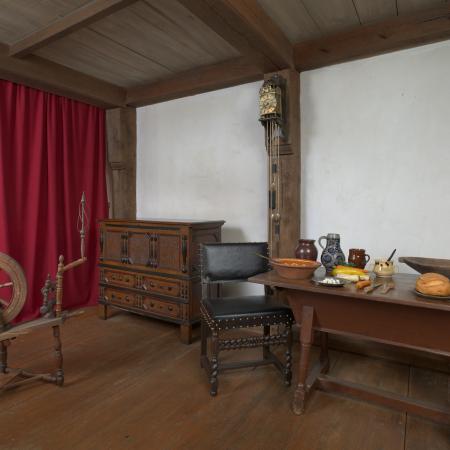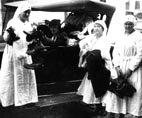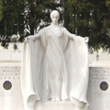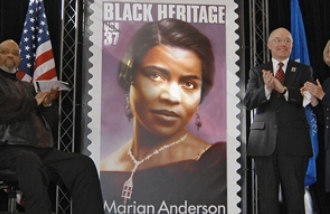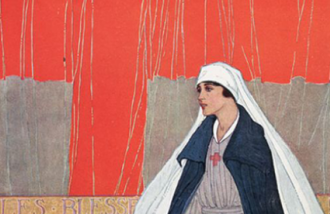Explore the American Home! Each of these 31 period rooms looks like you’re stepping into a room from the past. You can peek into an 1810s bedroom, 1820s dining room, 1860s parlor, and many more. Compare how homes have changed over the years; which features do we still use today, and which have fallen by the wayside?
Alabama
1840s Parlor in Alabama
New Technology
The family in this room is showing off their enthusiasm for modern technology.
California
1850s Parlor in California
Multicultural
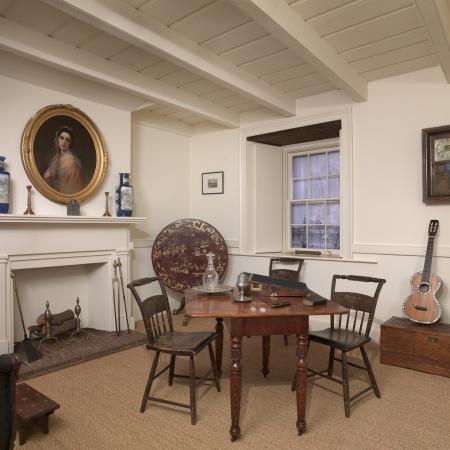
Connecticut
The Connecticut Board Room
The Connecticut Board Room was set aside to serve as a conference room for the NSDAR Board of Management. It is designed in a classical revival or Beaux-Arts style, inspired by Greek and Roman architecture. The furniture is in the very ornate rococo revival style and includes a replica of the famous “Rising Sun” chair from Independence Hall used by George Washington as he presided at the Constitutional Convention. The use of electricity to light the chandeliers was the latest technology during the early 20th century when this room was built. The exclusive use of electricity to light Memorial Continental Hall in 1910 signaled a turning away from gas lighting popular during the previous century. Each chandelier features a gilt or golden brass frame hung with polished glass spheres and jewels.
District of Columbia
1810s Parlor in the District of Columbia
An Island of Good Taste
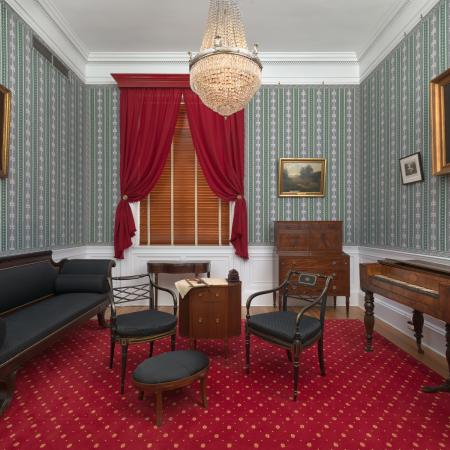
Delaware
1780s Study in Delaware
A Quiet Place
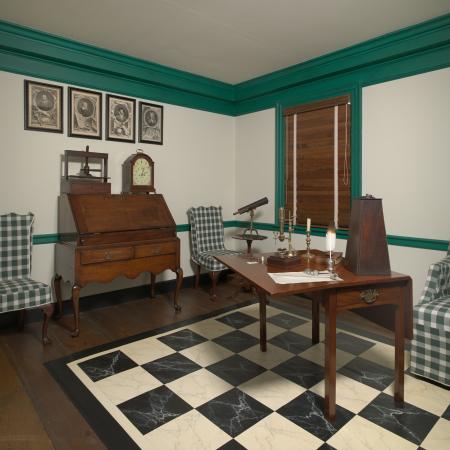
Georgia
1770s Tavern in Georgia
Women In Business
American independence owes a lot to taverns like Lucy’s!
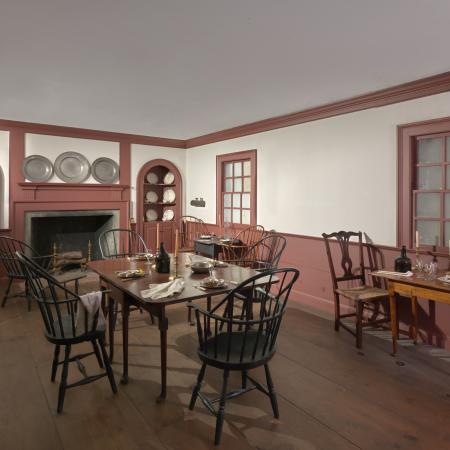
Illinois
1840s Bedroom in Illinois
A Lively Room
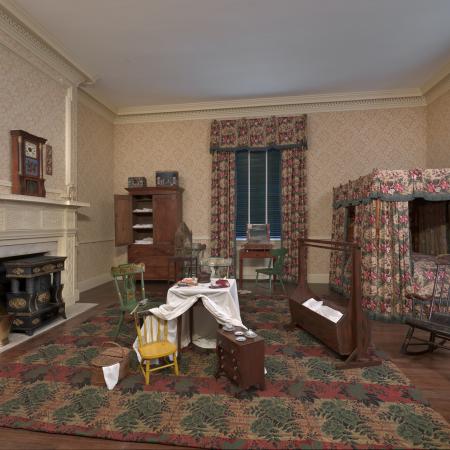
Indiana
1930s Parlor in Indiana
The Birth of Collecting
Collecting American antiques was still a new idea in the 1900s.
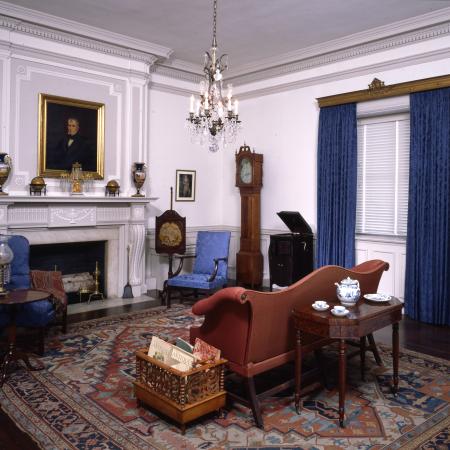
Iowa
1790s Parlor in the United States
The Seasons are in Charge
In our modern climate controlled houses we barely notice the change of seasons.
Kentucky
1830s Parlor in the United States
The New Classical Look
What makes fashion change? In the early 1700s, it was a discovery halfway around the world: the cities of Pompeii and Herculaneum. Excavating these cities showed the way ancient Romans decorated their houses, which was different from the large, well-known temples. This caused architects and designers to revise their thinking about neoclassical (new classical) styling, drawing from the ancient Romans and Greeks in a new way. Instead of heavy and monumental, neoclassical design is more delicate and dainty. By the early 1800s, home furnishings such as these reflected this new style.
Louisiana
The Louisiana Gallery
The Louisiana room, also called the Louisiana Gallery, is arranged as an exhibition displaying art and objects that reflect the rich cultural history of the state. The Gallery provides glimpses into domestic life interpreted through the lives of Louisiana women who served as wives, mothers, cooks, household managers, and educational and religious instructors. It focuses on domestic life and household furnishings, female education, and courageous women who shaped the history of the state. The Louisiana Gallery is the only room to display artifacts relating to the lives of Native-American culture. Almost all the gallery objects are either native to Louisiana or relate to its history.
Maine
1820s Parlor in Maine
Wealth from the Sea
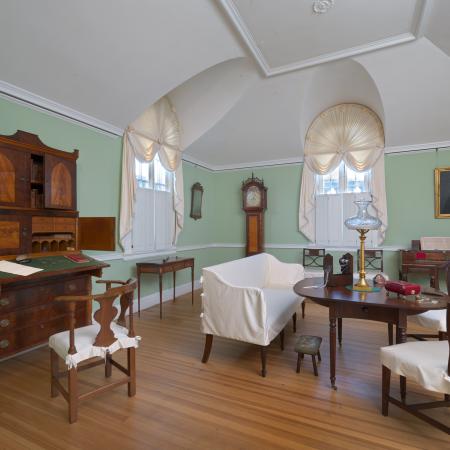
Maryland
1830s Parlor in Maryland
Honored Guests
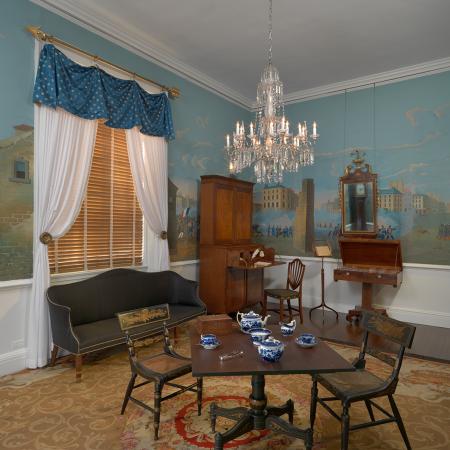
Massachusetts
1775 Bedroom and Parlor in Massachusetts
A Famous Ride
Tensions run high on the eve of the American Revolution. Neighbor turns against neighbor over the subject of liberty from England.
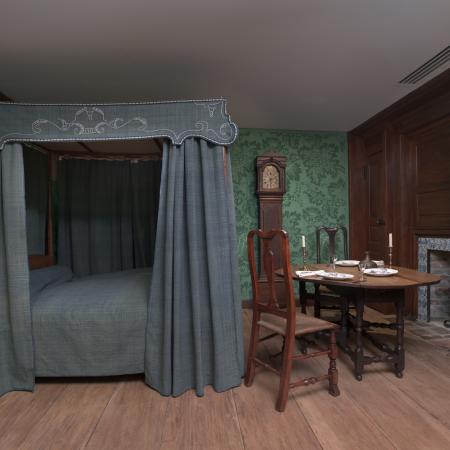
Michigan
1920s Library in Michigan
Home Office
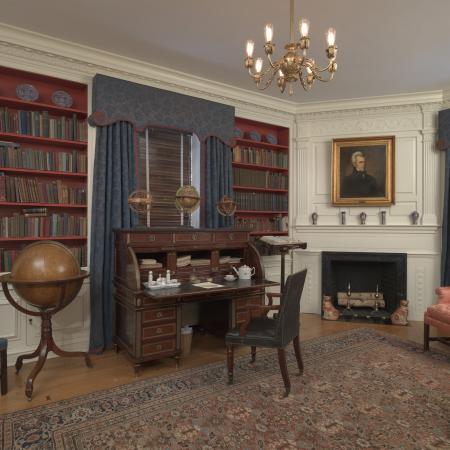
Missouri
1860s Parlor in Missouri
Support The Troops
Outside is war; inside is unity.
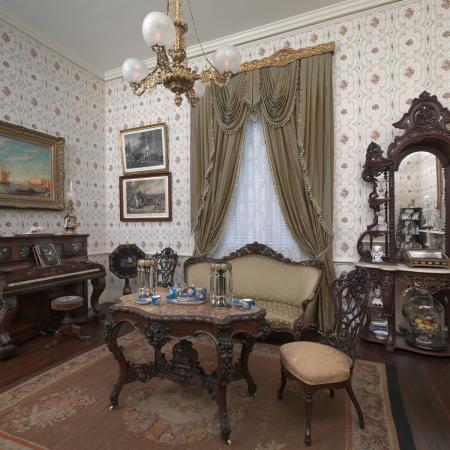
New Hampshire
1800s and Early 1900s Display of Children's Toys
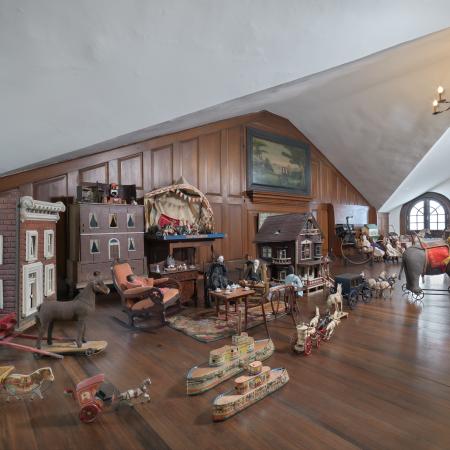
New Hampshire
1930s "Colonial" Pine Woodwork
Pretend Colonial
New Jersey
1910s Relic Room
Sunken Ship
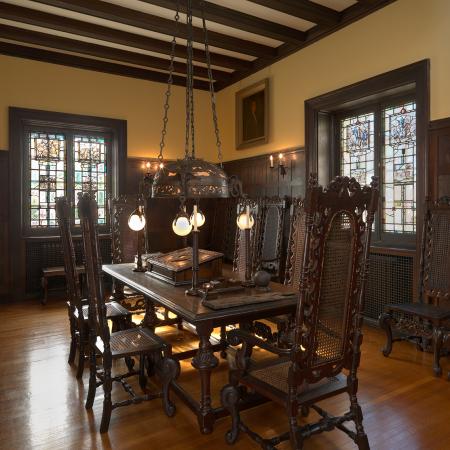
New York
1820s Parlor in the United States
Let The Games Begin
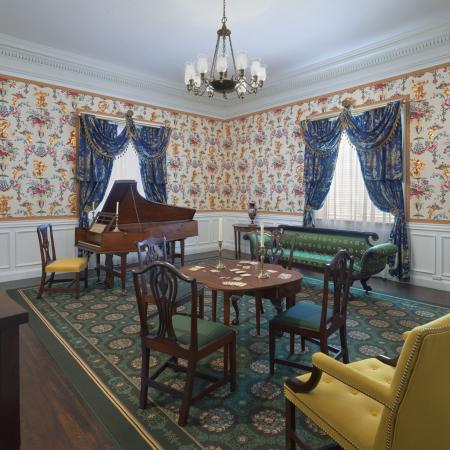
North Carolina
1820s Dining Room in the United States
Fine Dining
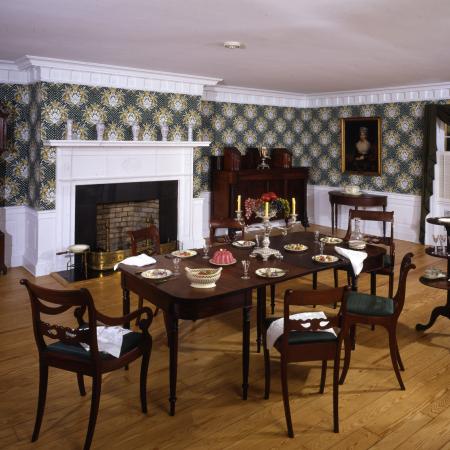
Ohio
1920s Parlor in Ohio
Two Celebrations
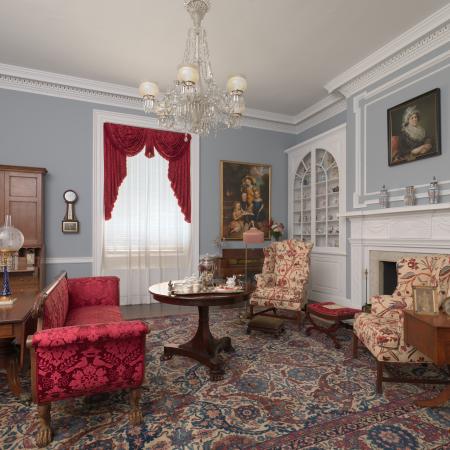
Oklahoma
1700s, 1800s & 1900s Display of Kitchen Tools
Colonial? Look again!
What happens when you take something old and arrange it in a new way?
You are looking at an idealized version of a colonial kitchen created in the 1800s and 1900s. People imagined what the colonial period was like and exhibited kitchens like this at local fairs and fundraisers. Clues include the unpainted wood paneling and the large number of cooking tools surrounding the hearth, which you would not see in a colonial era house. The objects in this room are real, but the way they are displayed is an invention from a later time.
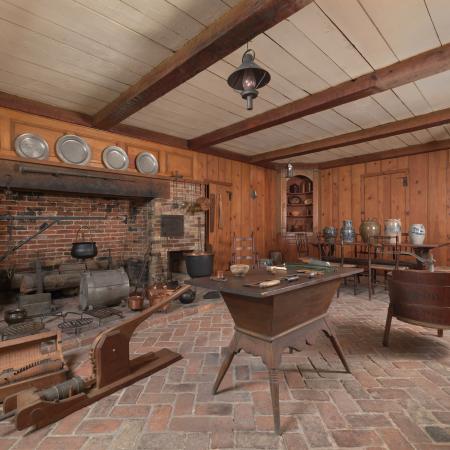
Pennsylvania
The Pennsylvania Foyer
Called the “Pennsylvania Foyer,” this grand space was the original entrance to NSDAR headquarters. The walls reflect the classical style of the building and are made of Vermont marble. The floor has a bronze medallion of the Pennsylvania state seal. The ornamental ceiling is made of plaster with sweeping swags, floral bouquets and acanthus leaves. The busts, set in the circular niches represent American revolutionary heroes. The Pennsylvania Alcove, just off the Foyer, contains a sampling of decorative arts made in Pennsylvania from the late 1700s and early 1800s.
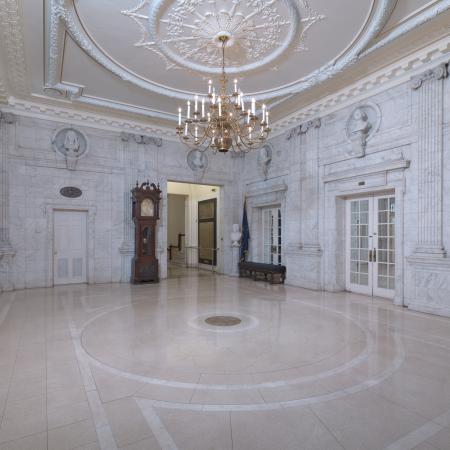
Rhode Island
1800s Display of Musical Instruments
Play A Tune
South Carolina
1810s Bedroom in South Carolina
Keeping Clean
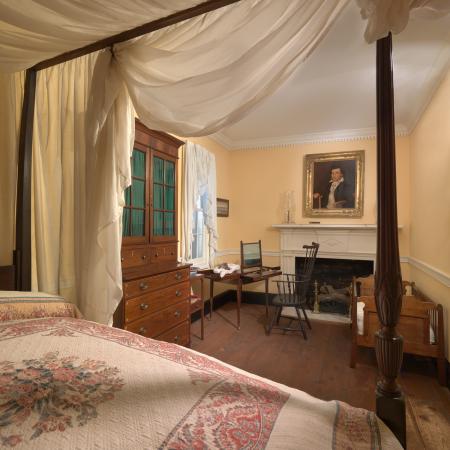
Tennessee
Display of White House Chairs
America's First House
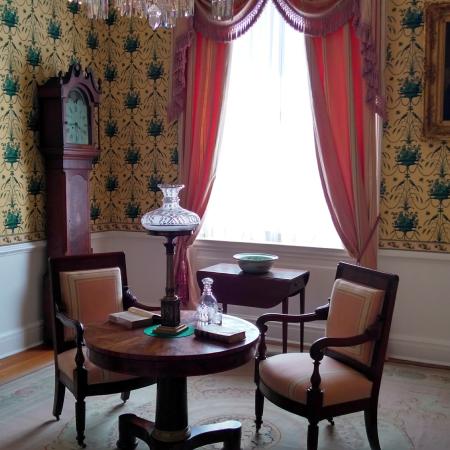
Texas
1860s Bedroom in Texas
New Settlers
Wilkommen! Meet the Mewes family.
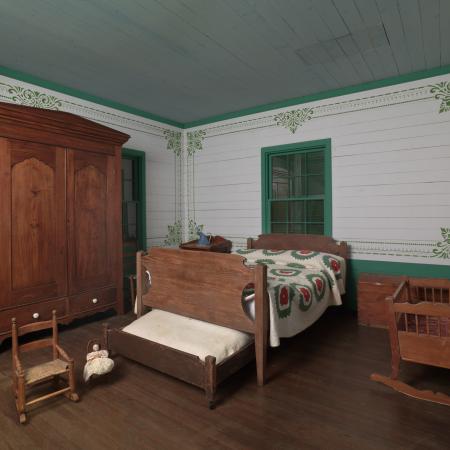
Vermont
1840s Parlor in Vermont
Quilting Party
Virginia
1810s Dining Room in Virginia
A Summer Meal
Don’t be late for dinner!
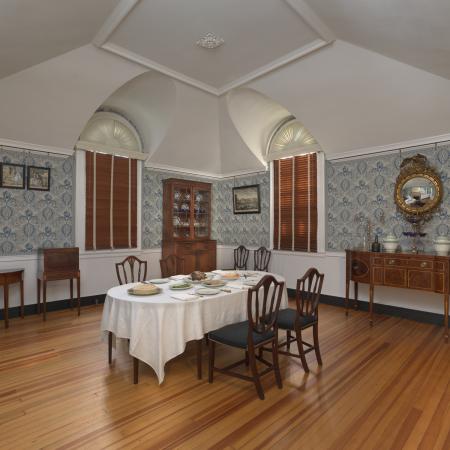
West Virginia
1820s Parlor in the United States
Home Schooling
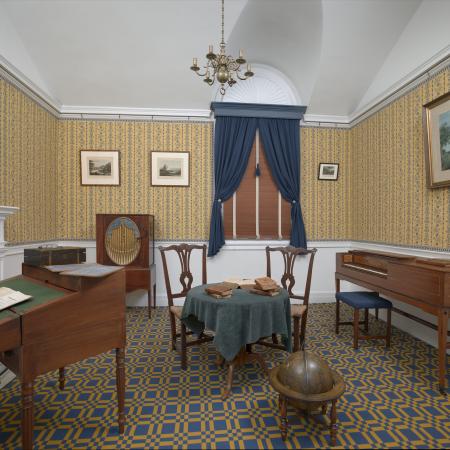
Wisconsin
1690s Hall in New England
Work Is Never Done
Welcome to the home office of the 1690s!
